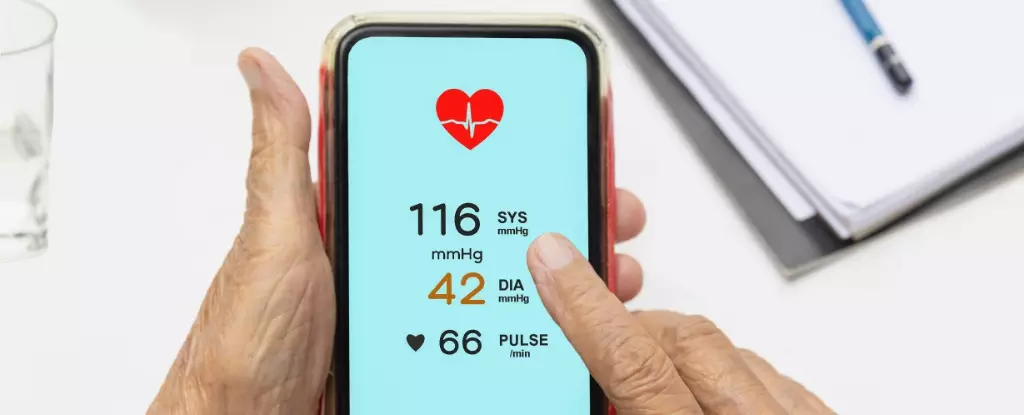High blood pressure, commonly referred to as hypertension, is a condition that affects millions globally without being diagnosed. It subtly increases the risk of severe health complications including heart disease, stroke, and kidney failure. This insidious nature makes hypertension a “silent killer,” often going unnoticed until it manifests through grave health issues. According to recent data, the percentage of individuals unaware of their hypertension status constitutes a troubling statistic, particularly in resource-limited settings where access to regular medical care is either scarce or non-existent.
In an innovative stride toward addressing this problem, researchers from the University of Pittsburgh have developed a smartphone application aiming to revolutionize how blood pressure is monitored. This app harnesses the existing technology within smartphones—specifically their accelerometers, cameras, and touch sensors—to provide an estimation of arterial pressure with no specialized equipment required. This is a significant departure from traditional methods that necessitate cumbersome devices like sphygmomanometers and often require a visit to a healthcare provider.
The app embodies a forward-thinking approach to healthcare accessibility. As Ramakrishna Mukkamala, a biomedical engineer involved in the project, articulates, many communities lacking proper health resources frequently possess smartphones. This intersection of technology and healthcare underscores a critical opportunity to enhance awareness and management of hypertension, especially among underserved populations.
Blood pressure is measured by two key indicators: systolic and diastolic pressure. Systolic pressure reflects the force exerted when the heart beats, while diastolic pressure gauges the pressure in the arteries when the heart is resting between beats. These measurements are critical as they help inform individuals and healthcare providers about potential risks associated with elevated blood pressure levels.
Traditionally, a blood pressure measurement involves inflating a cuff around the upper arm to temporarily halt blood flow, then gradually releasing it to gauge the pressure levels. While this method is reliable, it can be inconvenient for those who do not have immediate access to such devices. The new smartphone app offers an alternative that could democratize blood pressure monitoring, allowing anyone with a smartphone to take control of their health.
Understanding the mechanics behind the app sheds light on its efficacy. Instead of applying external pressure, the app determines blood pressure through the manipulation of gravity and finger pressure on the touchscreen. Users are instructed to adjust the positioning of their hands, which influences blood circulation. By measuring how pressure changes with these adjustments, the app can estimate pulse pressure relatively accurately.
Vishaal Dhamotharan, another researcher from the University of Pittsburgh, explains how the use of gravity plays a role in the calculations, making it an intelligent and practical solution. Initial tests involving 24 individuals have shown that the app can measure pulse pressure with an accuracy of around 8 mm Hg—certainly an encouraging start that demonstrates potential for improvement as the technology advances.
While the prospects of this app are exciting, the researchers acknowledge that some hurdles remain. A significant challenge is shifting public perceptions regarding the use of pulse pressure as a valid indicator for blood pressure readings. Increasing awareness and establishing credibility will be paramount in encouraging widespread adoption of this new technology.
Furthermore, the researchers aspire to enhance the app’s reliability even further, as the quest for a cuffless blood pressure measurement device that requires no external calibration is ongoing—a “holy grail” of sorts in medical technology. As the development progresses, it may not only transform how we approach hypertension monitoring but also pave the way for other innovative health technologies.
The emergence of this smartphone app presents a promising shift in hypertension management, particularly for those with limited access to medical facilities. As technology continues to intertwine with healthcare, innovations like this app mark significant steps toward a more equitable health landscape. By empowering individuals to monitor their blood pressure easily, we embark on a proactive journey toward better health outcomes and enhanced awareness about hypertension—a step that could ultimately save countless lives.



Leave a Reply